Beware the Shenanigans: How Companies Fake Free Cash Flow
TLDR; Share-based compensation dilutes the ownership of investors and should be considered a “real expense”. Investors should be skeptical of earnings and cash flow metrics that ignore this reality.
The Backstory
The early 2000s saw a string of scandals involving the likes of Enron, Worldcom, Tyco, Freddie Mac, and Healthsouth in which many companies used “creative accounting” to inflate reported profits to deceive investors. The lesson Wall Street took away from that debacle was to focus on cash flow under the notion that it was more difficult to fake. Except, there was just one teeny, little problem. Opportunistic managers picked up on this and started some new shenanigans.
Enter Share-Based Compensation
Following the onslaught, the surviving public companies, as well as the venture capital community, pursued a growth-at-all-costs mentality, pushing for expansion at the cost of current profits and cash flow. Most of these businesses were not profitable enough to fund expansion at the desired rate, so they turned to share-based compensation. Amazon & Starbucks were early beneficiaries of the strategy to use share-based compensation (SBC) to both top up cash salaries and to better align the interests of employees with those of investors. Like any good idea that proves successful, it was taken too far by those that followed.
Shenanigans 2.0
As memories of past scandals faded, companies began reporting something called “EPS - Non GAAP ex. SOE”
To simplify, companies essentially started reporting their “earnings” excluding expenses they would rather pretend were imaginary, chief among them being SBC. Think of it as a cheat code that allows you to grade yourself. By increasing the proportion of share-based compensation as a percentage of employee pay, companies could increase cash flow. Increased cash flow gave executives reason to tell investors that since it wasn’t a cash expense, they should add back SBC to their earnings figure so it better matched cash flow. Wall Street drank the syrup.
I’d be remiss if I didn’t pay homage to My Pro Forma Life , a thought-provoking satire on earnings adjustments.
Some Examples
To be clear, I’m just using these companies as examples. I’m not claiming outright fraud. I am merely pointing out some examples of companies that appear to be cashing in on the willful ignorance that is ever-present Wall Street.
Palo Alto is a leader in cyber security. I’m not going to critique their products/services, but I will use them as an example of accounting shenanigans.
Figure 1 Powered by FactSet
The first highlighted shows Palo Alto’s (PANW) earnings per share according to generally accepted accounting principles (GAAP). They turned a profit for the first time in 2023. However, they have been showing positive free cash flow (last line) and “Non GAAP ex. SOE” for years. How? Well, you can see all the expenses in the middle rows to which they decided that investors needn’t pay attention. There’s also that pesky “Share-Based Compensation Expense” row. In most years, the majority of “Free Cash Flow” was due to paying employees in shares rather than cash. If a company states that issuing its shares as a form of compensation is not “a real expense”, what does it say about the value of those shares?
Let’s now consider the case of Snowflake (SNOW), a cloud data warehousing software firm that is valued by the market at roughly $57B as of this writing. It doesn’t have a long history as a public company, but the short history is rather extraordinary in terms of shenanigans.
Figure 2 Powered by FactSet
Investors generally accept that Snowflake “earned” $0.98 per share in FY24. The GAAP number of negative $2.55 is disregarded. Because it’s a software firm that expenses product development rather than capitalizing it on the balance sheet, there is a real discussion to be had about what the “real” earnings should be and a lot of that comes back to how fast you depreciate the assets if capitalization was assumed. HOWEVER, are we really supposed to gloss over the fact that $3.40 per share was spent on share-based compensation in FY24? SBC exceeded FCF by $1.12 per share. In other words, if Snowflake’s employees demanded cash rather than shares, Snowflake’s cash flow would be deeply negative.
What To Make of All of This
Most business owners are extremely careful in protecting their equity. They know how difficult it is to build a successful enterprise. As such, the average person receives most of their compensation in the form of cash. However, some companies are doling out shares like candy. Wall Street laps it up because they get to see higher “cash flow”. If a company would prefer to pay you in stock rather than cash, it probably means 1 of 2 things. The stock is either overvalued or worse, valueless. After all, it’s an expense that “isn’t real”.
Final Thoughts
At Aurora, we are constantly looking for attractive investment opportunities for our clients. We look for businesses with economic moats, quality balance sheets and attractive upside potential. This blog represents our thinking at the time of publication. If you are a DIY investor, use this only as a starting point for your research and be sure to do your own due diligence. For questions regarding our asset allocation and individual stock strategies, please reach out to us!
Invest Curiously,
Austin Crites, CFA
Further Reading on Accounting Adjustments:
Austin Crites is the Chief Investment Officer of Aurora Asset Management, an Indianapolis-based subsidiary of Aurora Financial Strategies which is located in Kokomo, IN. He can be reached via email at austin@auroramgt.com. Investment Advisory Services are offered through BCGM Wealth Management, LLC, a SEC registered investment adviser. This blog does not constitute advice. This is not an offer to buy or sell securities. Advisor is not licensed in all states. Any mention of a particular security and related performance data is not a recommendation to buy or sell that security. BCGM Wealth Management, LLC manages its clients’ accounts using a variety of investment techniques and strategies, which are not necessarily discussed in the commentary. Investments in securities involve the risk of loss. Past performance is no guarantee of future results. Clients may own positions in the securities discussed. SEC registration does not constitute an endorsement of the firm by the SEC nor does it indicate that the adviser has attained a particular level of skill or ability.









